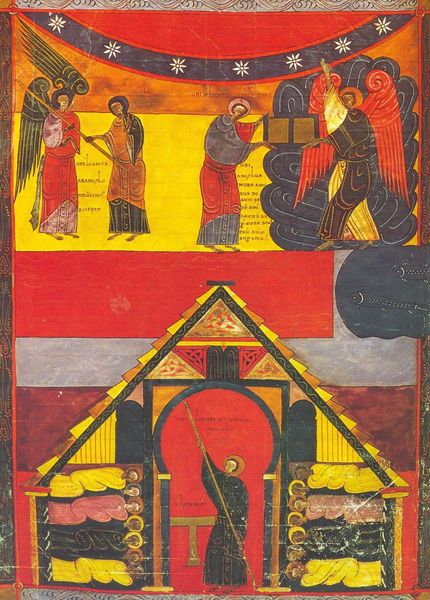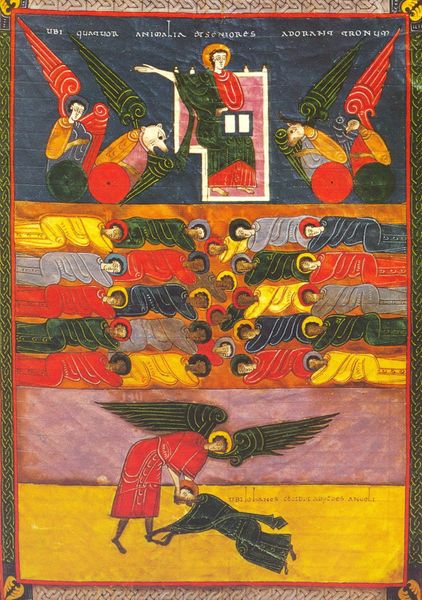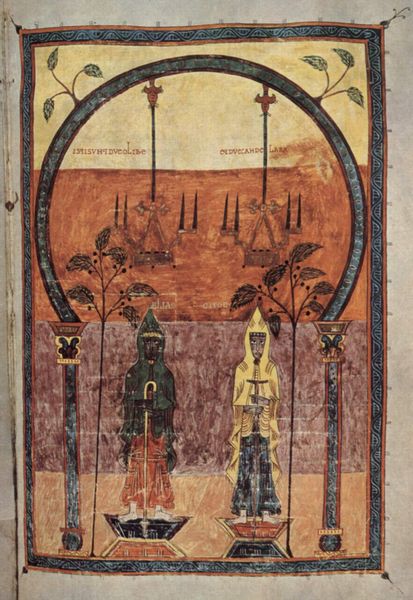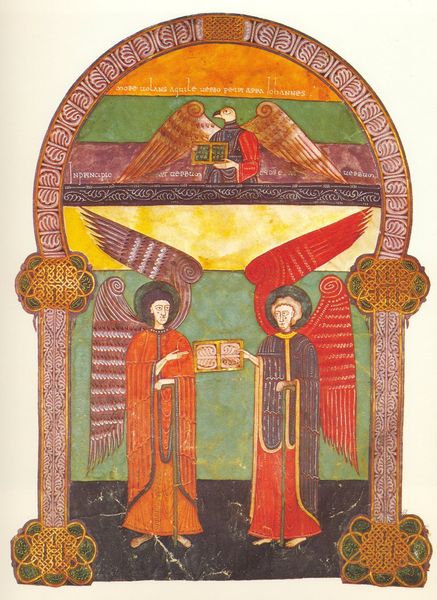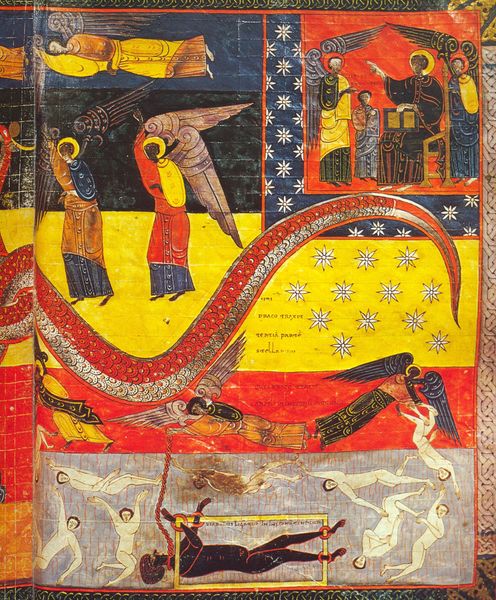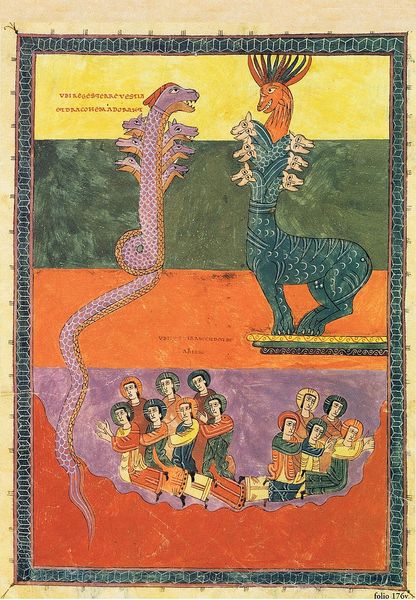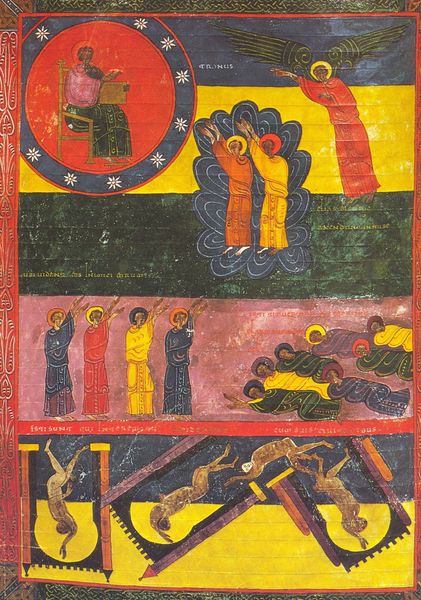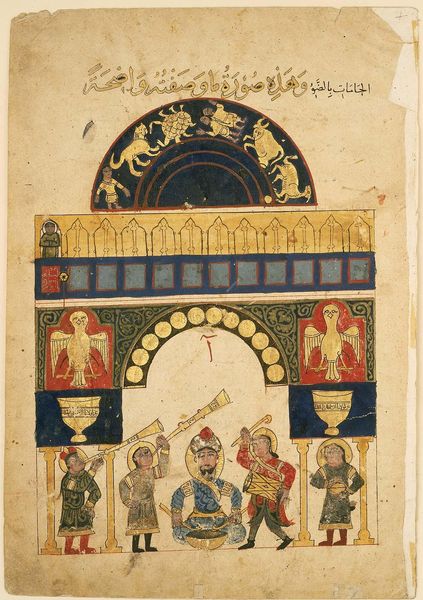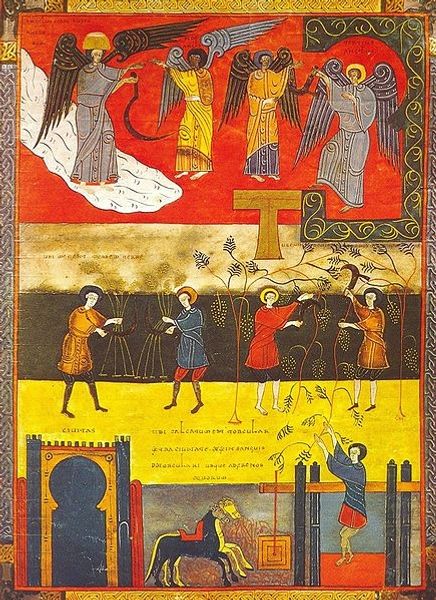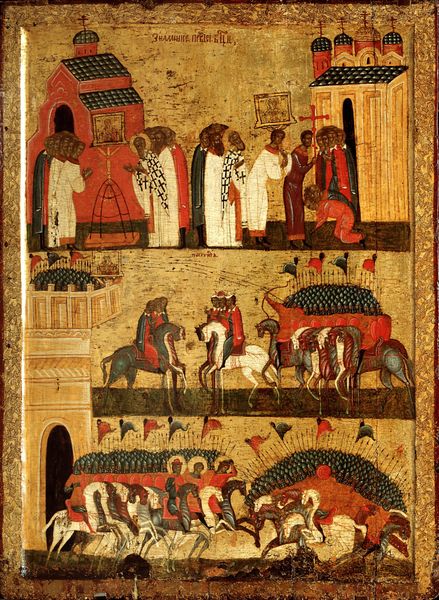
J'ean se prosterne devant l'Ange. Les sept Eglises d'Asie. La Théophanie. Apoc. XXII
0:00
0:00
tempera
#
byzantine-art
#
medieval
#
narrative-art
#
tempera
#
figuration
#
naive art
#
miniature
Copyright: Public domain
Curator: This vibrant image, crafted in tempera, illustrates a scene from the Book of Revelation. Titled "J'ean se prosterne devant l'Ange. Les sept Eglises d'Asie. La Théophanie. Apoc. XXII", its origin and exact date remain, intriguingly, a mystery. Editor: It’s visually striking; the arrangement into distinct registers feels very structured. The angel looming over the prostrate figure definitely establishes a power dynamic. Curator: Indeed, that tiered composition is key. Each level depicts a different facet of divine encounter. The upper register presents the Theophany itself – the enthroned figure held aloft by angels within a celestial sphere. This visual language roots the image firmly within medieval iconography. Note the seven lampstands below, each symbolizing one of the seven churches. Editor: So, there's this constant return to the number seven? Considering this artwork through the lens of its time, does that recurrence invite analysis relating to specific sociopolitical elements, especially linked to religious establishments or societal structures that impacted identity back then? Curator: Unquestionably! Seven, in biblical tradition, signifies completion and perfection. The churches aren’t just literal locations; they’re symbolic of the entire Christian community in Asia Minor, representing the full spectrum of human faith, and their potential shortcomings or strengths. The angel and Jean narrative below illustrates the humbleness of receiving spiritual insight, acting as both an allegory of the author in revelation, as well as a cultural and personal appeal towards modesty. Editor: That’s helpful to understand why humility is central here, a submission to authority on multiple levels. Are those hierarchies inherent in the image intended to bolster systems of belief? Is there a subversion within? What can be gained or lost? Curator: That's the tightrope this image walks! While there’s certainly reinforcement of divine authority, the very presence of Jean – representing humanity – being granted this vision opens a space for personal interpretation. The divine isn’t entirely remote; it seeks engagement. Its use also promotes a reading culture—illuminating faith, with many contemporary versions being available through various readings. Editor: It does spark an urgent sense of now. Seeing these medieval approaches – color and imagery -- what continuities can we find in present political graphics regarding themes like hope, obedience, or even defiance? Curator: Perhaps in the visual vocabulary itself. Think about how contemporary movements adopt powerful color schemes and repeated symbols to create easily recognizable messages – echoing, in a way, this image's effective, resonant approach. The need to portray shared aspirations and concerns has always sought art's contribution, though its use varies radically with its accessibility across media and cultural shifts. Editor: Exactly, its place. Seeing that relationship and understanding its reach across cultural media makes me appreciate these vibrant approaches and how the symbolism changes over time.
Comments
No comments
Be the first to comment and join the conversation on the ultimate creative platform.
